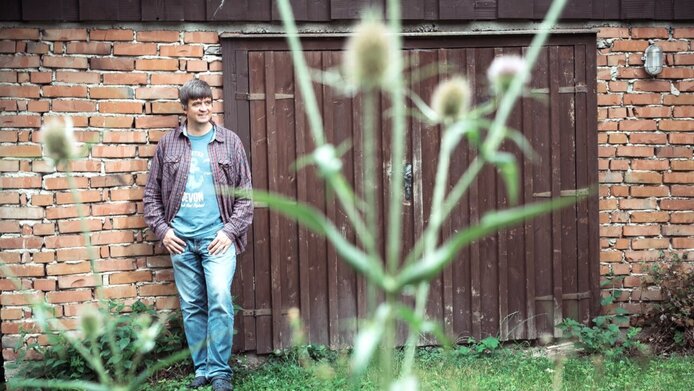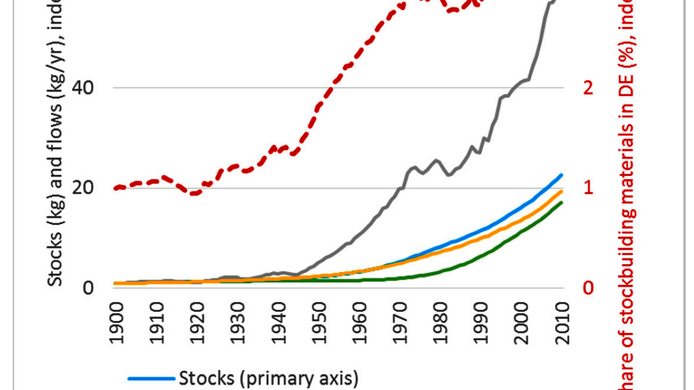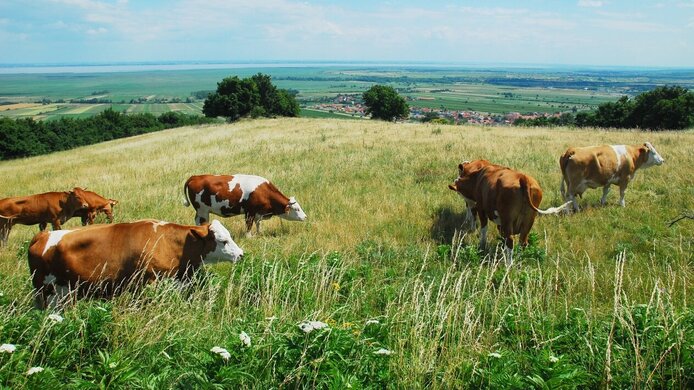“It’s not a question of giving up comfort, it’s about a better life!”

On 23 September 2007, people take to the streets in Sefrou, a Moroccan town not far from Fez. According to various sources they number between 2,500 and 4,000. They demonstrate against a 30% increase in the state-subsidised price of bread. The prices of tea, sugar and milk have also risen painfully. By the end of that day, 300 people were injured, 20 of them seriously. In that year, hunger riots broke out in almost 40 countries worldwide.
Growing maize for bio-ethanol
“There are several, complex reasons for the price increases of staple foods between 2006 and 2008. But we have to assume that bio-energy policies in Europe and the US, where sometimes more than one third of the maize harvest went into bio-ethanol production, contributed massively to the disruption on the agricultural markets and the steep price increases on product markets”, says Helmut Haberl in the interview with scilog. The human ecologist warns against the belief that fossil energy might simply be replaced by bio energy.
IPCC
Haberl, the head of the Vienna Institute of Social Ecology, which is part of the Faculty of Interdisciplinary Research of the Alpen-Adria-Universität Klagenfurt, was one of the lead authors of the current Austrian Assessment Report for the Intergovernmental Panel on Climate Change (IPCC) which was published in 2014. The IPCC was founded in 1988 by the United Nations Environmental Programme (UNEP) and the World Meteorological Organisation (WMO) as a non-governmental institution called upon to summarise the state of research on climate change for policymakers without formulating recommendations for action. 195 governments are members of this panel.
Bio-energy rarely carbon neutral
In his part of the Assessment Report, Helmut Haberl deals mainly with systemic interdependencies in the sphere of land use. To quote an example: producing bio-energy on a large scale requires enough land. Changing land use to bio-energy production can have serious consequences. One consequence Haberl mentions is the impact on agricultural markets or on the carbon balance of global vegetation. “Only in very rare cases will bio-energy be carbon neutral”, says Haberl. “What is relevant for the climate is the change in the atmosphere’s carbon content. A big risk of the bio-energy strategy is the lack of reliable data about the concomitant carbon storage in vegetation and in the ground and their dependence on land-use intensity. How strongly the carbon content of the ground and vegetation changes because of land use and the degree of impact exerted by climate change differ depending on the model that one uses. Computations of emission reductions following a greater use of bio-energy also depend strongly on the models they’re based on. These uncertainties are much too significant for one to build robust policies on them”, warns Haberl. This is why he believes we need to invest in more research on the interdependency between land use and the carbon cycle, and we need better geo-sensing instruments.
Demand-side potential
Helmut Haberls conclusion in the Austrian Assessment Report: while there is potential to reduce greenhouse gases by changing land use, the major potential can be found on the demand side. “It’s not about giving up comfort, it’s about a better life! If the human race were to adopt a healthier diet, the climate would already benefit a lot. In some regions of the world this means less consumption, and more consumption elsewhere. One billion people overeat, while another billion are undernourished”, the ecologist notes. “Between a quarter and a third of global greenhouse gas emissions from agriculture could be avoided by converting to a healthy diet”, Haberl specifies. “The highest greenhouse gas emissions per calorie come from what we call red meat, i.e. mainly beef.”
Environmental protection makes economic sense
Haberl considers the US withdrawal from the Paris climate accord as a case of burying one’s head in the sand. He completely disagrees with the argument that doing less for climate protection would help the economy. “Analyses of the ecological and economic performance of US states show that the states with the worst environmental laws are usually the ones with the weakest economy. Ambitious ecological standards promote innovation and thus boost the economy.”
“Social metabolism”
In the coming years, Helmut Haberl intends to shift his research focus from land use to “social metabolism”. The term denotes the process by which human societies take raw materials and energy from their natural environment, process them through production and consumption and convert them into products or artefacts such as buildings, infrastructure, machinery, etc. This creates waste and emissions in the form of energy (waste heat) or material waste (including CO2, toxic emissions and solid waste).
ERC Advanced Grant for MAT_STOCKS
The scientist wants to use the funds from the renowned ERC Advanced Grant he received earlier this year for his MAT_STOCKS project, in order to develop indicators and models for the material stocks of human societies. This involves issues such as: what type of stocks (in terms of infrastructure, buildings, machinery, etc.) are amassed by societies? What is the significance of creating, maintaining and using these stocks for the annual flows of material, energy, emissions and waste? How good are combinations of stocks and material or energy flows at furnishing the desired services? For example: “In order to provide the energy-related service ‘well-tempered living space’, you need an energy supply chain from the oilfield to the pipelines, the refinery and the local heating system. If you design a house in such a way that you don’t need all of that – a passive house for instance – the energy set-up looks entirely different. Or you might not even need any active energy system, because solar energy and the heat created by the users are sufficient to keep the building at the right temperature”, says Haberl.

With his project, the human ecologist would like to develop material stocks indicators broken down by function, i.e. categories such as industrial plants, residential buildings and so on. In order to generate the data, Haberl cooperates with remote sensing experts from the Department of Geography at the Humboldt Universität Berlin. “We are anticipating global maps with an unparalleled level of precision and resolution”, the scholar announces happily.
Interdisciplinarity at its best
Haberl’s work is a prime example of interdisciplinary research. “We observe society with methods derived from science. – But we always do it in such a way as to include social relevance by providing links to methods and data from the social sciences”, is how he describes the way people work at his Institute. That said, communication problems between disciplines do sometimes arise. “We measure the biophysical aspects of social activity. For biologists this sounds quite esoteric and not really like hard science. To the social scientists, however, it is utterly scientific”, he comments on the different perspectives and laughs: “As a biologist I am my fellow biologists’ favourite ‘socio economist’ because they understand me.”
Biology and teaching mathematics in Salzburg
Studying biology seemed a natural choice to this scientist who hails from Upper Austria, because even at a young age he was very interested in ecology and became involved in several ecological conflicts such as Wackersdorf and Hainburg. In order to study biology and become a teacher of mathematics he first moved to Salzburg. “There the study course for teachers was identical with the regular mathematics curriculum, and there were no separate classes for teacher candidates as offered at the University of Vienna, where some classes mainly served to prepare students for teaching arithmetic”, he explains as to why he took this decision at the time. Even as a pupil, the 52-year-old scholar had found school maths “terrible and the opposite of real mathematics. Teachers who teach real mathematics at school are few and far between. Usually they simply transmit rote arithmetic instead of exploring the ideas behind it. That is why this discipline has such a bad reputation in society!”, Haberl notes.
Institute of Ecology
After the first two years, Haberl switched to the University of Vienna. After graduation he set up the unit on energy and the environment at the Institute of Ecology. In the 10 years he worked there he also carried out efficiency studies for power plants. There is one he remembers particularly well: “At the time we calculated that the Langkampfen power plant on the Inn river would never be a good business case. The operating company TIWAG considered that to be nonsense. Shortly afterwards, Austria joined the EU, and the power plant soon ended up on the list of stranded investments. So we were vindicated.”
Society based on fossil energy
What irks Haberl about the discussion on climate protection is, as he sees it, too strong a focus on technical issues. He concedes that there are, of course, numerous technical issues that need to be resolved, but says the problem cannot be reduced to that. Instead, the crux of the matter is the way our society is organised, based on fossil energy, and the fact that changing that energy base would require revamping our social format. “Fossil energy is firmly embedded in our social structure”, says Haberl and quotes the world of science as an example. “It is considered perfectly natural to fly to attend a half-day meeting. If I don’t go along with that I risk having to pay enormous social costs: either I’m not going at all, then my indicators will go down and my impact on the debate is reduced. Or else I take the train. But taking the night train before the meeting and then again after the meeting, and that several times a month, is something I’m not ready to do”, he says and stipulates: “In science we should discuss indicators of success. Perhaps in this case, too, less activism would mean more quality of life.” This would not necessarily detract from the quality of the scientific work, but the current indicators that hinge mainly on the level of activities do not appropriately reflect that.
Just-in-time
Another example Haberl gives relates to production flows: “Just-in-time production works only if there's a warehouse bordering the roadside.” And even work structures and the underlying power structures are based on fossil energy: “People expect you to be at the office at 8 o’clock on the dot, no matter where you live, and if ever you lose your job you're expected to accept one that's 100 kilometres away.“
Societal transformation
“If we change our resource basis and our energy, if we change our material stocks, we change society – in terms of how work, income, diet and so on are organised. The fact that this involves a societal transformation is ignored in the discussion. There can be no transformation to a zero carbon society without changing societal structures. Trying to delegate this to the engineers is absurd!”, emphasises Haberl.
Technical solutions – new social problems
The ecologist claims that not enough attention is given to the new social problems that would arise with technical solutions such as carbon capture and storage. “Where is the carbon going to be stored and who keeps an eye on it? Which military units will guard it? Who can switch on the valves and thereby trigger instability in the atmosphere? To do that you need a controlling state. What does it mean for a society if it amasses hazardous wastes? These are all unanswered questions”, Haberl warns.
Existing structures are the problem
He believes we will not be able to do without risk technology entirely, but sees the solution primarily in less movement of material and energy. Some steps in that direction are already being made in new construction projects. “Low energy buildings are the standard in Vorarlberg”, is the example he quotes. The big problem is existing structures, but also the fact that positive gains are negated by rising consumption. “Efficiency gains in cars are eaten up by increased mobility requirements – for instance because of ill-conceived zoning policies. Production is still based on the economy of scales, where production chains are more and more broken down into individual steps. Although this increases the efficiency of individual plants, in sum total it leads to an ever-expanding travelling circus of products”, is how he describes the problem.
“We need fundamentally different solutions“
According to Haberl we have to take care not to create solutions that bring relative improvements but are harmful in the longer term, because they entail clinging to a structure beyond repair. As an example he quotes the bio-fuel policy of the mid-2000s. “They didn’t think that through. Although emissions were somewhat reduced, the same harmful structures persisted. This ignored the fact that we need fundamentally different solutions for the transport system. It was just a convenient way of perpetuating the vehicle-based transport system.” Helmut Haberl feels one mustn’t take the moral high ground but rather try to convince people that this is not about having less, but about having a better and healthier life.
Helmut Haberl is the head of the Vienna-based Institute of Social Ecology within the Faculty of Interdisciplinary Research of Alpen-Adria-Universität Klagenfurt. He studied biology and mathematics in Salzburg and Vienna, acquired his PhD in Ecology in 1995 and his venia docendi in Human Ecology in 2001 at the University of Vienna. Haberl is the author of numerous inputs to prominent journals and a contributor to the Global Energy Assessment of IIASA and to the 5th Assessment Report of the IPCC. Earlier this year he received an ERC Advanced Grant from the European Research Council. His research focus includes energy and the environment, climate change, integrated land system research, bio-energy and socio-ecological long-term research.






